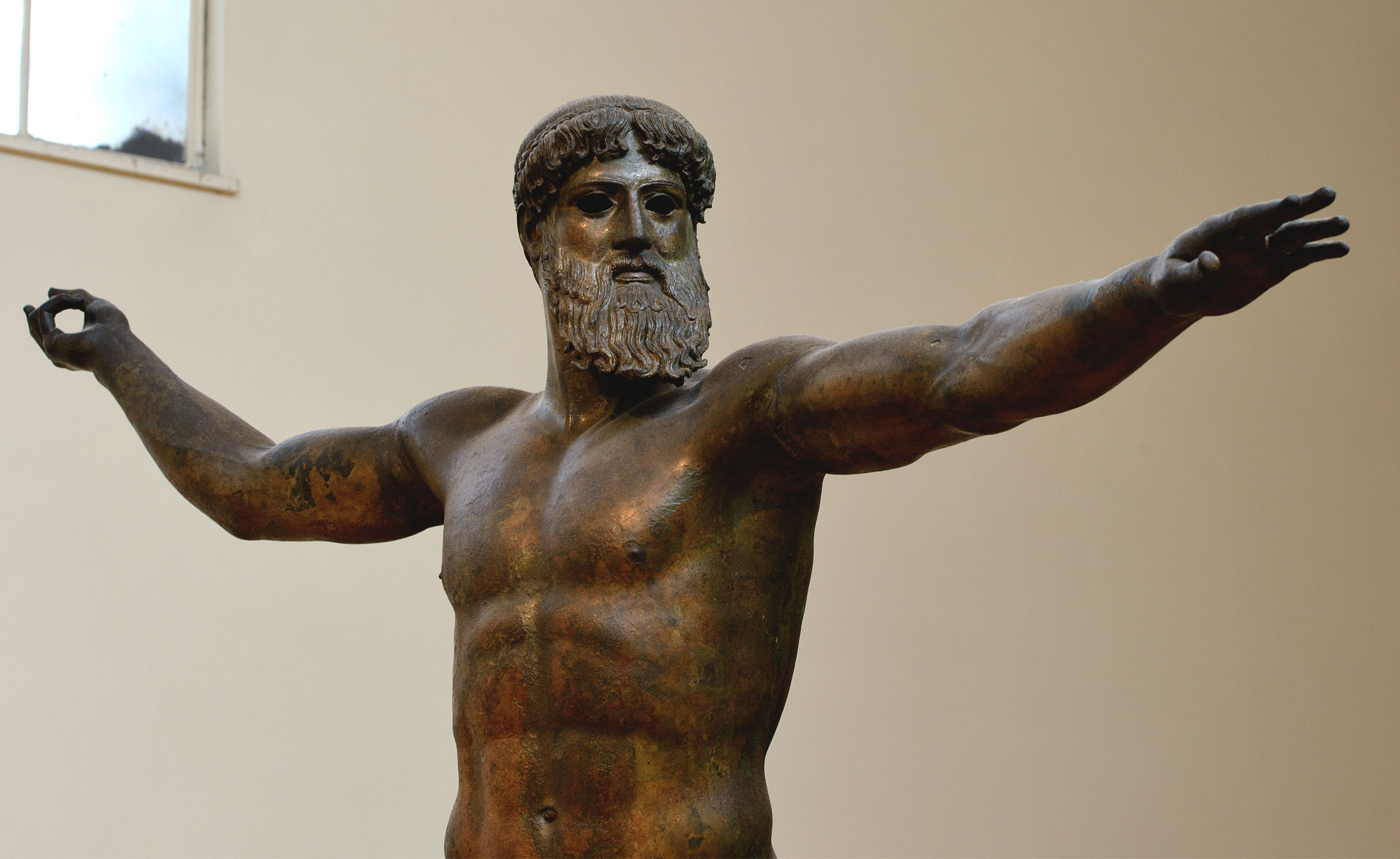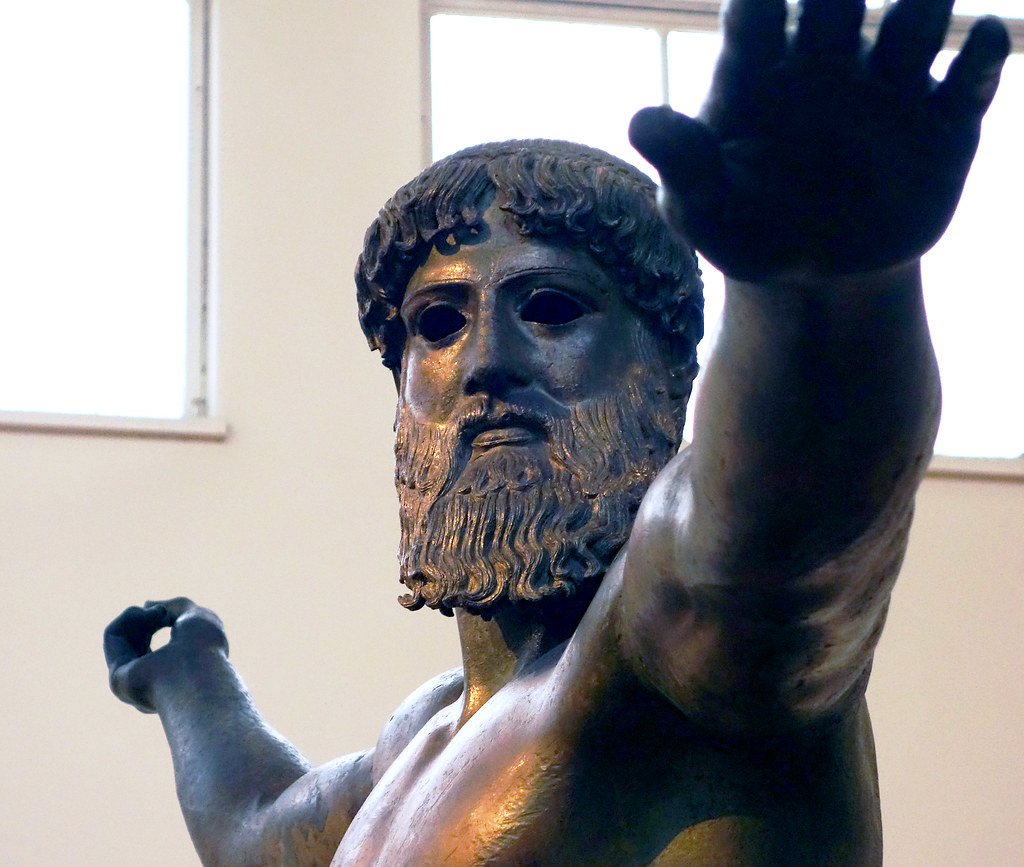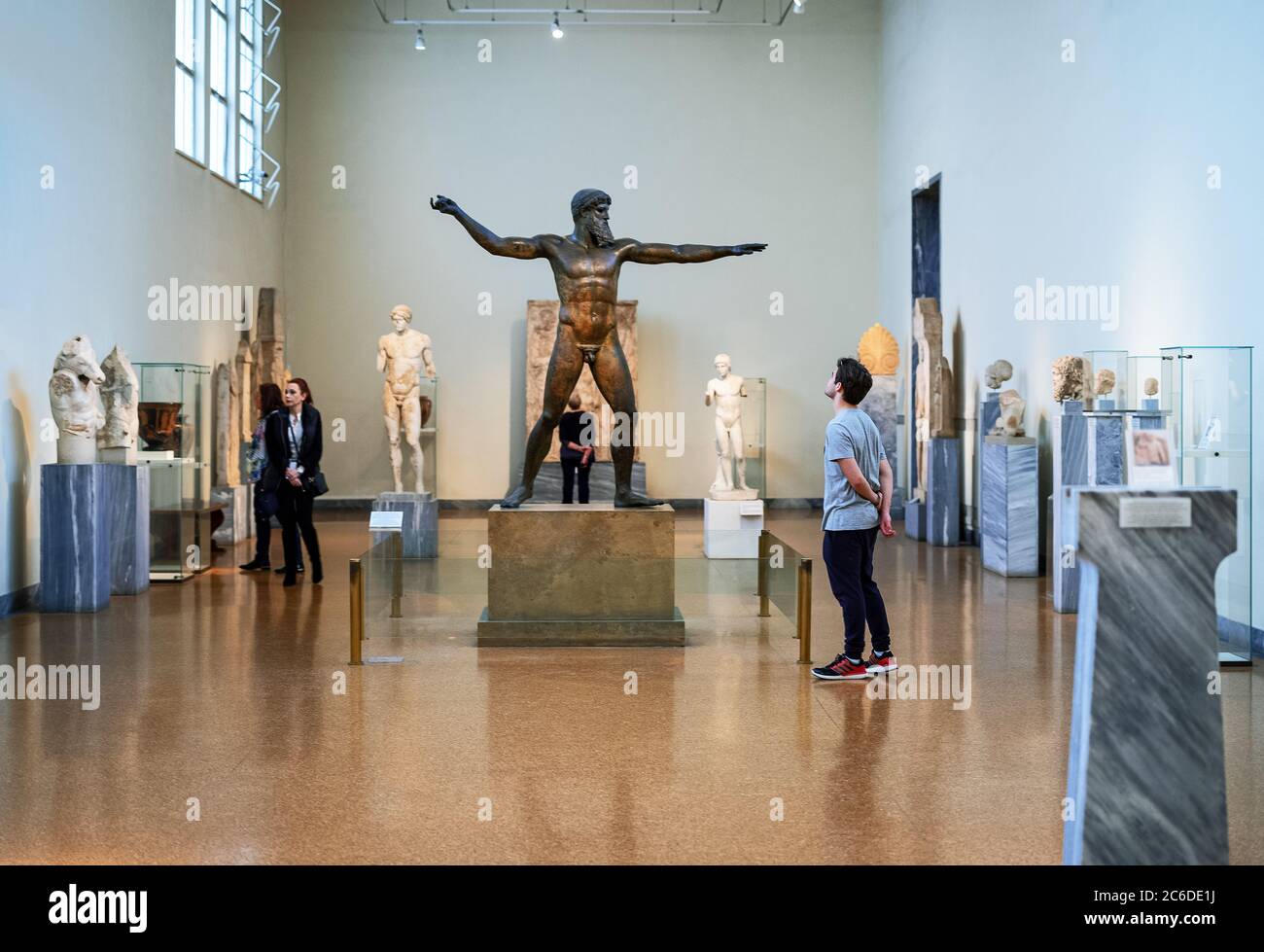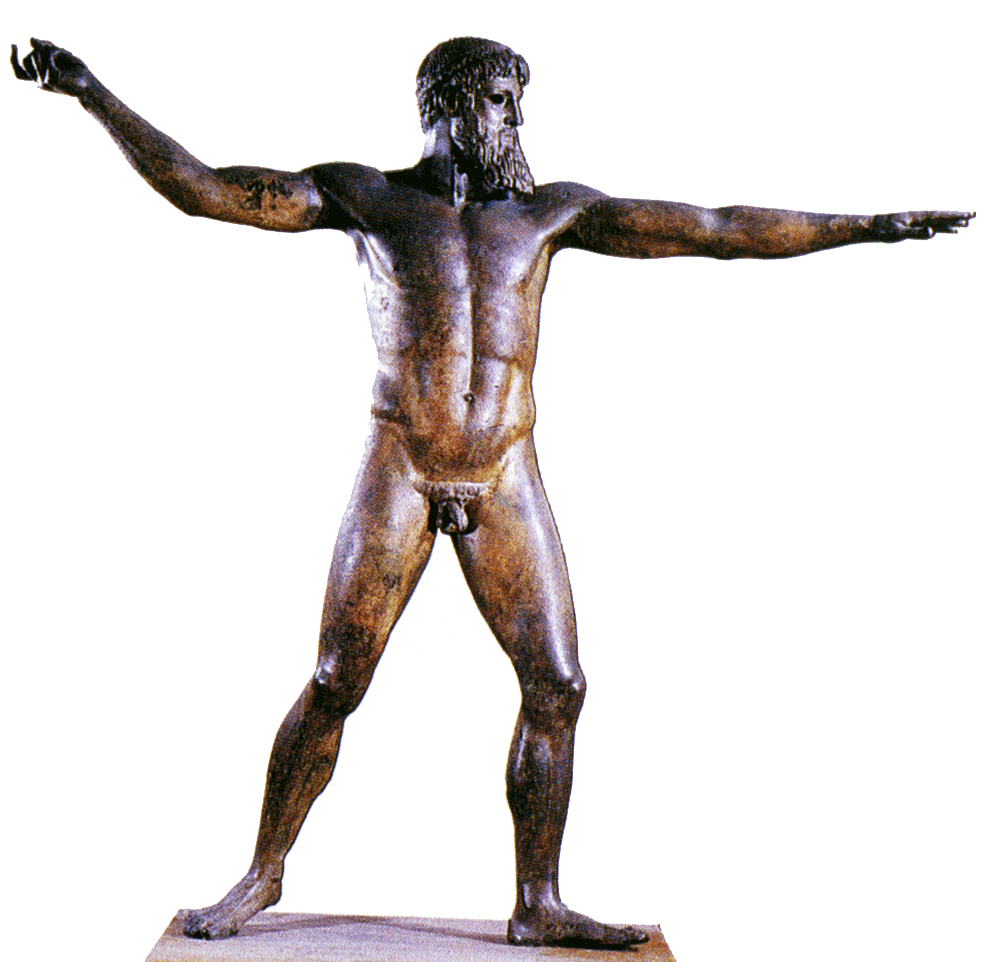.jpg)
Il Dio di Capo Artemisio Museo Archeologico Nazionale di Atene Tutt
Una delle statue più importanti del cosiddetto "periodo severo" dell'arte greca. E' Zeus o Poseidone? Per approfondire l'argomento, visita il sito:https://un.

» Religion comparisons and connections
Zeus of Artemision The Zeus of Artemision is a rather grand bronze statue that serves as an example of fifth century sculpture like the Diskobolos. It was recovered from a Roman shipwreck near Cape Artemesion in 1928 which means that the Romans most likely intended to transport it from Greece to Rome but apparently failed in doing so.

Zeus di Capo Artemisio , cosi chiamato perchè rinvenuto nei fondali del
Artemision Zeus or Poseidon, c. 460 B.C.E., bronze, 2.09 m high, Early Classical (Severe Style), recovered from a shipwreck off Cape Artemision, Greece in 1928 (National Archaeological Museum, Athens) Speakers: Dr. Beth Harris and Dr. Steven Zucker. Created by Steven Zucker and Beth Harris. Questions Tips & Thanks Want to join the conversation?

Artemision Zeus or Poseidon, c. 460 B.C.E. Artemision Zeus… Flickr
Italiano: Il Cronide di capo Artemisio (detto anche il Dio di capo Artemisio) è una statua bronzea dell'antica Grecia, ritrovata nei fondali marini antistanti capo Artemisio, nell'odierna Eubea, ed attualmente conservata nel Museo archeologico nazionale di Atene. È una delle pochissime opere bronzee originali che ci sono giunte. Subcategories

Zeus di Capo Artemisio Descrizione e Riassunto
The Artemision Bronze (often called the God from the Sea) is an ancient Greek sculpture that was recovered from the sea off Cape Artemision, in northern Euboea, Greece. According to most scholars, the bronze represents Zeus, [1] [2] the thunder-god and king of gods, though it has also been suggested it might represent Poseidon.
2 ZEUS DI CAPO ARTEMISION
Zeus or Poseidon from Cape Artemisium (Illustration) - World History Encyclopedia Zeus or Poseidon from Cape Artemisium Illustration by Mark Cartwright published on 26 April 2012 Download Full Size Image A bronze statue of Poseidon (or Zeus) from Cape Artemisium (460 BCE), National Archaeological Museum, Athens. Remove Ads Advertisement

QUESTO SENTIMENTO DELL'ESTATE, 6 L'UOMOMARE, prima parte CON TUTTI
Artemision Zeus or Poseidon. This bronze god sank to the bottom of the sea where he sat for millennia, but who is he and what can he tell us? Artemision Zeus or Poseidon, c. 460 B.C.E., bronze, 2.09 m high, Early Classical (Severe Style), recovered from a shipwreck off Cape Artemision, Greece in 1928 (National Archaeological Museum, Athens)

Cronide Di Capo Artemisio Arte greca, Arte, Archeologia
La statua di Zeus di Capo Artemisio (chiamata anche "Cronide di C.A.") raffigura un nudo di uomo che risale cira al 460 a.C., attribuito a Calàmide. Il termine "Cronide" significa figlio di.

Zeus di capo artemisio YouTube
Sei di fronte a uno dei più celebri capolavori del museo: la statua in bronzo di Poseidone da Capo Artemisio, dio del mare, o secondo altre interpretazioni di Zeus, re degli dei, nell'atto di.

Artemision Zeus or Poseidon (detail from front close), c. … Flickr
Zeus era il re dei 12 dei dell'Olimpo, nonché divinità suprema della religione greca. Viene spesso chiamato Padre, dio del tuono e "radunatore di nuvole". Controllava il tempo atmosferico e offriva segni e presagi. In generale, Zeus dispensava giustizia, garantendo l'ordine tra dei e umani dal proprio seggio situato sul monte Olimpo. Zeus e Crono

"Artemision" Reproduction bronze statue of Zeus or Poseidon
Diego e Mario

Poseidon Sculpture StockFotos und Bilder Getty Images
Calamide, Zeus dell'Artemision, 480-470 o 460-450 a.C. Particolare del volto. Gli occhi, oggi perduti, un tempo erano certamente in avorio, con le pupille in materiale lapideo. È, questa, una caratteristica che sarebbe diventata dominante nell'arte greca classica. I caratteri anatomici sono quelli di un corpo atletico, forgiato da un.

Athènes, Grèce, statue de bronze de Zeus (Zeus de Capo Artemisio) au
Description "He lived at the bottom of the sea and reigned over the sea monsters and storms, often portrayed in a chariot drawn by tritons and horses, with a trident in his right hand", Cicero from the "De Natura Deorum".

Image Artemisium Zeus.gif Mythology Wiki FANDOM powered by Wikia
Zeus di Capo Artemisio è una statua di epoca arcaica ritrovata nel 1926 e conservata nel Museo Archeologico Nazionale di Atene. Calamite o bottega, Zeus di Capo Artemisio (Cronide di capo Artemisio), 470-480 a.C, bronzo, h 209 cm. Atene, Museo Archeologico Nazionale Qui trovi l'immagine dell'opera, vai al sito della del Museo Indice Descrizione

Bronze statuette of Zeus. Roman period, 1st2nd century AD, said to be
Bronze statue of Zeus or Poseidon. Bronze. Ca. 460 BCE. Inv. No. X 15161. Athens, National Archaeological Museum Photo by Ilya Shurygin.. γενειάδα γενειοφόρος άνθρωπος nude nudo nackt nackter nu artemision from the sea cronide di capo artemisio vom kap du cap artémision ποσειδώνας του.

Épinglé sur Les Sculptures
Zeus of Artemision (also called Poseidon) Artist / Origin: Unknown Artist, Greece Region: Europe Date: ca. 460 BCE Period: 500 BCE - 1 CE Material: Bronze Medium: Sculpture Dimensions: H: approx. 7 ft. (2.1 m.) Location: National Archaeological Museum, Athens, Greece Credit: Courtesy of Vanni / Art Resource, NY